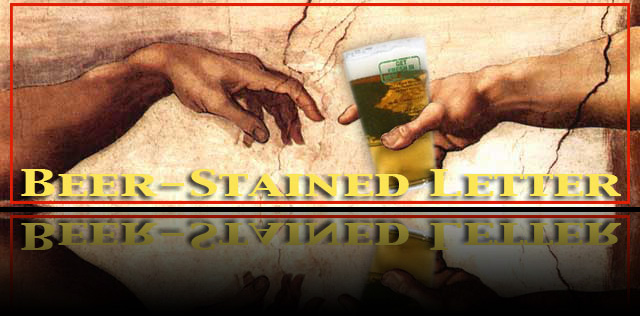Decade from Hell's silver lining: Craft beer
Time magazine called 2000-2009 the Decade from Hell.
The New York Times and Princeton's Paul Krugman played it by the numbers, or more precisely, number, denouncing the 10 years from Y2K to this year as the The Big Zero.
To be sure be sure, the past 10 years have been packed with enough high anxiety (from 9/11 through almost economic depression) near the starting and finish lines to last a century, while the middle years featured two ongoing wars, a disaster named Katrina and techno-changes (i.e. online social networking, blogs and YouTube) that burst onto the scene as rapidly as our scared pulses raced in 2001.
It certainly has been a decade to make you reach for a drink, to settle the nerves or marvel the innovations. And happily, beer has been a king of our collective glass – beers of all kinds, in fact, save those bland light lagers that seemed more akin to dial-up Internet than the adventurous frontiers borne of Web 2.0. Craft beer, microbrew ... whatever we call it now, by whatever distinctions (brewery size, methods, or an overlap of both), it has definitely come on strong (a $6 billion industry now, with nealry 1,500 breweries nationwide) in the headwaters of the 21st century, with variety and consumer choice unseen since Prohibition, its repeal and the subsequent, long-lingering consolidation hangover that defined the fade of the 20th century. (Check out the fact pages from the industry group Brewers Association, the folks we nicked the graphic from.)
Craft beer, microbrew ... whatever we call it now, by whatever distinctions (brewery size, methods, or an overlap of both), it has definitely come on strong (a $6 billion industry now, with nealry 1,500 breweries nationwide) in the headwaters of the 21st century, with variety and consumer choice unseen since Prohibition, its repeal and the subsequent, long-lingering consolidation hangover that defined the fade of the 20th century. (Check out the fact pages from the industry group Brewers Association, the folks we nicked the graphic from.)
Over the decade, imperial brews widened their reach, from double IPAs that could be found in the late 1990s, to just about everything that seemed like it could use some amping up (imperial pilsner, anyone?). Although, imports were down nearly 10 percent through half of 2009, according to the BA, they are very much an indelible part of the package store shelf-scape, both exotic and straight-forward, and many of them are a continued source of inspiration for homebrewers and some Jersey pub brewers (Belgian browns at the Tun Tavern or Harvest Moon, for instance).
Good restaurants discovered it wasn't enough to have a well-represented wine list. They also needed beer lists that spoke to changing palates. Meanwhile, distributors, who could rightly or wrongly be faulted for once acting cool toward craft brews, have gotten behind them as an important market segment.
And those megabrewers? Well in the past they may have seen craft brews as viable enough to produce through arrangements that kept their brand names out of sight. But last year, about the same time the economy was withering like a parched suburban lawn in an August heatwave, Budweiser began pushing an American ale, marketing it with slogans draped in talk of dry-hopping and Cascades cones. That was on the heels of Anheuser-Busch (which, as we know, has a brewery in Newark) realizing it couldn't outrun a hostile takeover with InBev, and therefore made friends with a merger to create Anheuser-Busch InBev, the world's largest brewer. The mash-up left Boston Beer and its Sam Adams brand as the largest U.S.-owned brewer, a turn of events notably ironic since AB buried the St. Louis family brewery of Sam Adams founder Jim Koch. (Cue Nelson Muntz and a round of ha-ha.)
Adding to AB's in-the-decade market moves is a wheat beer under the Bud Light trademark, a business model-defying development say some New Jersey craft brewers, who note the megabrewers aren't exactly setup to play to such niche tastes.
And speaking of New Jersey, since this is a blog about Jersey-made beer, brewers in the Garden State say the arc of the past decade goes from shakeout of a late 1990s craft brew bubble to more breweries and consumers. But on top that are fewer companies to distribute the beer, something that could be a crosscurrent to navigate in the coming decade, say some Jersey brewers.
Don "Joe Sixpack" Russell, Philadelphia's noted beer guide, points out that while the variety has surged, brand loyalty has ebbed. Consumers, he says, are drinking what's good, not what's advertised.
Additionally, Don notes there's a new generation of beer drinkers that has craft brew as a primary reference point. That is to say, craft beer has always been available to them, unlike their predecessors who recall the novelty of a Guinness nitrogen tap system coming to the corner bar, or even Sam Adams on draft.
There are also second- and third-generation brewers getting into the act, Don says, 20somethings emerging from college who homebrewed their takes on great craft beers and see themselves making their beers for wider audiences.
Happy New Year. The next decade beckons.
Highlights in Jerseyana beer
A brief list, and it's based more on recollection than research, which means it leans toward the more recent, rather than the past. Anyway, here goes ...
London calling: Flying Fish sends beer to Year 2000 Great British Beer Festival in the UK capital (we were there). But alas, the beer gets held up in transit and ends up being served at a subsequent festival elsewhere in Blighty.
Win some, lose some: Cricket Hill Brewing opens in Fairfield in Essex County (2002), with a brace of brews – East Coast Lager and American Ale, as its flagships. Blue Collar Brewing in Vineland closes (2005); Heavyweight Brewing exits New Jersey (2006), resurfaces in Philadelphia as the brewpub, Earth Bread+Brewery; Iron Hill brewpub, started in Delware by a trio of Jerseyans, makes a long-awaited homecoming, opening a location in Maple Shade (2009).
Lights, camera, action: Climax Brewing and its owner, Dave Hoffmann, is featured in the film American Beer (2004). Hey Dave, you exist as a cast credit in the Internet Movie Database. You're a star.
Ten years after: Breweries and brewpubs that hit the double-digit anniversary: Climax (2004); High Point (2004); Ship Inn (2005); Triumph (2005); Long Valley (2005); Flying Fish (2006); River Horse (2006); Harvest Moon (2006); Original Basil T's (2006); Artisan (formerly Basil T's in Toms River, 2007); Trap Rock (2007); JJ Bitting (2007); Tun Tavern (2008); Pizzeria Uno (2008); Gaslight (2008); Krogh's (2009).
Festivals: The Garden State Craft Brewers Guild moored its annual festival at Camden's waterfront in 2005. That followed the closing of the former site, Waterloo Village in Sussex County. and some roving around some. The Atlantic City beer festival sprang up at the resort town's convention center in 2006, while JJ Bitting began sponsoring an annual festival in Woodbridge.
Gone but not forgotten: Beer Hunter Michael Jackson, the world's guiding light for beer, dies in September 2007. Sadness in June 2008 when Jay Mission, Triumph's director of brewing operations and a luminary in New Jersey craft beer, dies suddenly.
Hippo rescue: New Jersey lost two production craft breweries in the decade, and the tally could have easily risen to three, if a couple of finance guys with a taste for beer hadn't pictured themselves as in being the beer business. Chris Walsh and Glenn Bernabeo shook up the brewery's moribund product line and restored confidence in the brand.
Read all about it: New Jersey Breweries guide book is published (2008). An on-again, off-again idea, authors Lew Bryson and Mark Haynie tackle a subject made difficult by the fact that the Garden State's craft beer scene, in terms of producers, is more spartan when compared to our neighboring states.
National limelight: First there was a brew that saluted the New Jersey Turnpike and the Jersey pop culture what exit tie-in; then there was brouhaha over it when the New Jersey Turnpike Authority erroneously assumed the beers projected an image of drinking and driving. Nevertheless, the TA simmered down and Flying Fish's Exit Series beers captured national media attention and a gold medal at the Great American Beer Fesitval in 2009. The next exit, the fourth in the series and first in 2010, will be up north, we hear, and will land in your glass with a Belgian bent.
Clean break: Basil T's in Toms River, long a separately owned brewpub from the original Basils pub in Red Bank, completes the break, announcing in October 2009 a name change to Artisan's Brewey & Italian Grill.














No comments:
Post a Comment